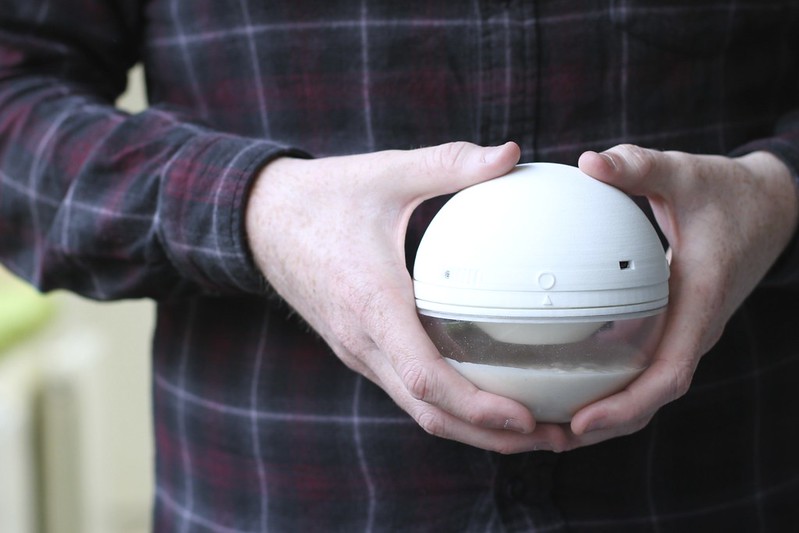have great content
yes, that one. perhaps the most obvious point became one of the most laboured points of the day; have great content. it would seem obvious to most that this is the absolute starting point, so i felt that we should get that out of the way quickly. it goes without saying that if you have great content, people will interact with it, they will share it, it will increase affection towards your brand. it’s worth noting about 5 different speakers drew reference to red bull’s stratos event – not that every brand has to send a man into space.
 |
| bruce daisley |
this point really leads on from having great content, a great, big idea can live in any platform. or as chris maples of spotify says “most of the rules are still the same, it just happens that the platforms have changed”. just because there are a variety of channels and platforms available to you, it doesn’t mean you have to use them all. when felix jumped (yep, again) over 8 million people watched it live on youtube and the only comms used were BTL. but bruce daisley of twitter highlighted adidas’ #takethestage olympic campaign, as they took a hashtag and expressed it across all of their channels – ATL and BTL. he explained a couple of reasons that this campaign worked so well, one - the hashtag was not branded, people could make it their own. it created it’s very own narrative by being turned into #stagetaken – giving the campaign flexibility and longevity after the games. charlie hiscocks summed it up best with “we shouldn’t be asking what is our digital strategy – ask what is our strategy for a digital world?”.
have a social strategy
that moment when the client says 2 weeks from launch “let’s do something on facebook!”. know why you are doing something. rené rechtman from goviral boldly said “red bull are selling one boring drink and they made a media brand out of it – you have to do this to survive. but it’s not a one size fits all scenario, discern the line of credibility – you only have to deliver on your benefit. Just because you can do something, it doesn’t mean you have to”.
 |
| thomas marzanno |
 |
| john winsor |
there were a lot of co words being used when talking about the future of brands; co-creation, collaboration, co-action. cindy gallop said that today is about co-creation and tomorrow is co-action – brands making money because they do good. john winsor, founder of victors & spoils, a crowd-sourcing ad agency spoke about the importance of co-creation. he claimed that one of the main reasons agencies such as his need to exist is that owing to the proliferation of media platforms, there is a greater need for more ideas. we’re not sure if we agree with this, especially when it comes to having an integrated campaign but he pointed to examples such as harley davidson and american airways where it has worked. john urged agencies to be the change, to disintermediate themselves (hand over power to the fans) and focus on compensation on outputs not inputs.
 |
| cindy gallop |
mobile
according to the 'mobile shopper survey' conducted by draftfcb this year, people are starting to use mobile more than broadband. news consumers (readers) are choosing mobile web over apps by nearly 3 to 1 and during the olympics 42% of olympics-related traffic came from mobile. the question is how should we adapt to this? other forms of media have been successfully incorporated into this surge, examples of collaborations with mobile during the day included out of home from coca-cola and banner ads for the release of 'the amazing spiderman'. bruce daisley said that “a lot of people don’t get twitter until they’ve used it on mobile”. people want a seamless experience between online and offline and mobile facilitates this, mobile is an extension of ourselves.
the CEO of guardian news and media, david pemsel stated that “the audience is always ahead of us”. This is because brands are faced with the challenge of an ‘always on’ audience. five year plans are no longer relevant, the focus now has to be on creating the right user experience. twitter has seen the flow of ideas increase in speed, hashtags are used to see instant (if short-lived) trends. the rise in sharing is due to the fact that no one can be a constant real time decision maker, ready to be engaged 24/7. debra coughlin from draftfcb explained that the most recent information is the most significant and an availability of tools builds confidence in a brand.
authenticity/transparency
 |
| jane, graham & marian |
 |
| kate, chris, rené, jonny & charlie |
it was perhaps a slightly sobering thought from droga5’s CSO jonny bauer right at the end of the day, but it was certainly honest and refreshing. it’s very easy to get caught up in social, getting obsessed in engagement levels, reach, likes, retweets and the next big thing. but has anyone really cracked it? jonny said that the only brand that has gotten anywhere near monetizing social is nike with their fuelband. it was agreed in the end that we’re still very much on the way to working out social and digital and as mel said – we need to stop talking about it and get on with doing it.





